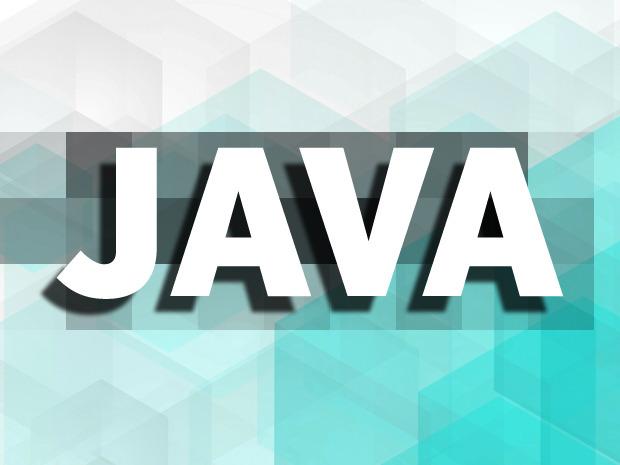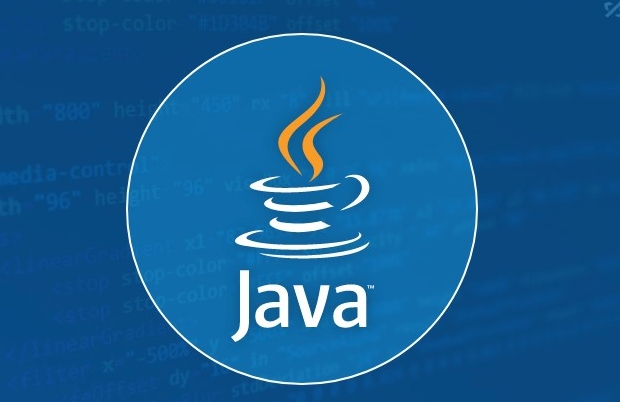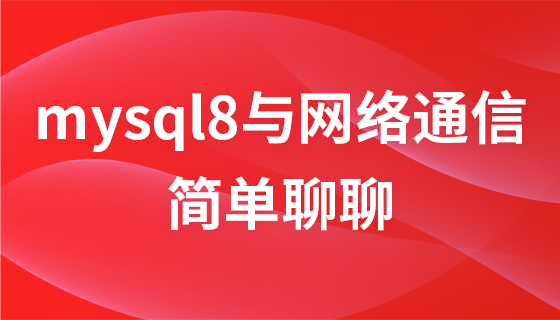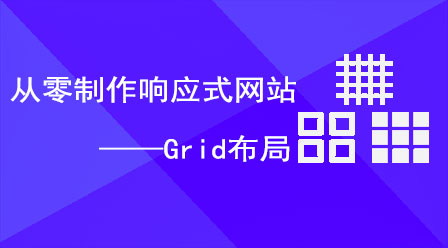Java收发邮件全攻略:教你轻松实现邮件接收
时间:2025-06-19 10:01:14 453浏览 收藏
在文章实战开发的过程中,我们经常会遇到一些这样那样的问题,然后要卡好半天,等问题解决了才发现原来一些细节知识点还是没有掌握好。今天golang学习网就整理分享《Java收发邮件教程:手把手教你接收邮件》,聊聊,希望可以帮助到正在努力赚钱的你。
Java中接收邮件的核心是使用JavaMail API连接邮件服务器并解析内容。1. 引入JavaMail API依赖,Maven或Gradle配置对应库;2. 配置连接信息,包括服务器地址、端口、用户名和密码,并启用SSL及适当认证方式;3. 编写代码连接IMAP服务器(如Gmail的imap.gmail.com:993),获取并遍历邮件消息,解析主题、发件人和内容,处理多部分内容和附件;4. 使用OAuth 2.0认证时,创建Google Cloud项目并启用Gmail API,获取Client ID、Client Secret和Refresh Token,通过Google Java Client Library获取Access Token用于连接;5. 解决常见问题如连接超时或SSL握手失败,检查网络、端口、SSL设置,添加证书到信任库,并设置合理的超时时间。

Java中接收邮件,简单来说,就是利用JavaMail API,连接邮件服务器,然后像拆包裹一样,把邮件从服务器上取下来,再解析里面的内容。这事儿听起来简单,但实际操作起来,会遇到各种各样的小问题。

解决方案

引入JavaMail API依赖:

首先,你需要把JavaMail API的依赖添加到你的项目中。如果你用Maven,就在
pom.xml里添加:<dependency> <groupId>com.sun.mail</groupId> <artifactId>javax.mail</artifactId> <version>1.6.2</version> <!-- 找个最新版本 --> </dependency>如果是Gradle,就在
build.gradle里添加:implementation 'com.sun.mail:javax.mail:1.6.2' // 找个最新版本
配置连接信息:
你需要知道邮件服务器的地址、端口、用户名和密码。这些信息通常可以在你的邮箱设置里找到。比如,用Gmail,可能需要开启“允许不够安全的应用访问” (现在不推荐,建议使用OAuth 2.0),或者开启应用专用密码。
编写代码接收邮件:
下面是一个简单的例子,演示如何连接到邮件服务器并获取邮件:
import javax.mail.*; import javax.mail.internet.MimeMessage; import java.util.Properties; public class EmailReceiver { public static void main(String[] args) { String host = "imap.gmail.com"; // IMAP服务器地址 String username = "your_email@gmail.com"; // 你的邮箱 String password = "your_password"; // 你的密码 Properties props = new Properties(); props.put("mail.store.protocol", "imap"); props.put("mail.imap.host", host); props.put("mail.imap.port", "993"); // IMAP端口,通常是993(SSL)或143(非SSL) props.put("mail.imap.ssl.enable", "true"); // 启用SSL try { Session session = Session.getDefaultInstance(props); Store store = session.getStore("imap"); store.connect(host, username, password); Folder inbox = store.getFolder("INBOX"); inbox.open(Folder.READ_ONLY); Message[] messages = inbox.getMessages(); System.out.println("收件箱邮件数量: " + messages.length); for (int i = 0; i < messages.length; i++) { Message message = messages[i]; System.out.println("主题: " + message.getSubject()); System.out.println("发件人: " + message.getFrom()[0]); System.out.println("内容: " + getTextFromMessage(message)); // 处理邮件内容 } inbox.close(false); store.close(); } catch (MessagingException e) { e.printStackTrace(); } catch (Exception e) { e.printStackTrace(); } } private static String getTextFromMessage(Message message) throws Exception { if (message instanceof MimeMessage) { MimeMessage mimeMessage = (MimeMessage) message; Object content = mimeMessage.getContent(); if (content instanceof String) { return (String) content; } else if (content instanceof Multipart) { Multipart multipart = (Multipart) content; return getTextFromMultipart(multipart); } } return ""; } private static String getTextFromMultipart(Multipart multipart) throws Exception { StringBuilder result = new StringBuilder(); for (int i = 0; i < multipart.getCount(); i++) { BodyPart bodyPart = multipart.getBodyPart(i); if (bodyPart.isMimeType("text/plain")) { result.append("\n").append(bodyPart.getContent()); } else if (bodyPart.getContent() instanceof MimeMultipart){ result.append(getTextFromMultipart((MimeMultipart)bodyPart.getContent())); } } return result.toString(); } }这段代码会连接到你的Gmail收件箱,打印出邮件的主题、发件人和内容。注意替换
your_email@gmail.com和your_password为你的真实邮箱和密码。处理邮件内容:
邮件内容可能包含纯文本、HTML、附件等。你需要根据邮件的
Content-Type来选择合适的处理方式。getTextFromMessage方法简单处理了文本和Multipart类型的内容,实际应用中可能需要更复杂的逻辑来解析HTML邮件和处理附件。
如何处理邮件中的附件?
处理附件的关键在于识别BodyPart的Disposition。如果Disposition是Part.ATTACHMENT,那么它就是一个附件。你可以使用bodyPart.getInputStream()来获取附件的输入流,然后保存到本地文件。
if (Part.ATTACHMENT.equalsIgnoreCase(bodyPart.getDisposition())) {
String filename = bodyPart.getFileName();
InputStream is = bodyPart.getInputStream();
// 保存附件到本地
FileOutputStream fos = new FileOutputStream("path/to/save/" + filename);
byte[] buffer = new byte[4096];
int bytesRead;
while ((bytesRead = is.read(buffer)) != -1) {
fos.write(buffer, 0, bytesRead);
}
fos.close();
is.close();
}如何使用OAuth 2.0认证来连接Gmail?
直接使用用户名和密码连接Gmail已经不推荐了,建议使用OAuth 2.0。这需要你创建一个Google Cloud项目,启用Gmail API,然后获取Client ID、Client Secret和Refresh Token。
创建Google Cloud项目并启用Gmail API:
- 访问Google Cloud Console,创建一个新项目。
- 在API和服务中,搜索并启用Gmail API。
- 配置OAuth同意屏幕,设置应用名称、用户支持邮箱等。
- 创建OAuth 2.0客户端ID,选择“桌面应用”类型,获取Client ID和Client Secret。
获取Refresh Token:
你需要使用Client ID和Client Secret来获取Refresh Token。可以使用Google提供的OAuth 2.0 Playground (https://developers.google.com/oauthplayground) 来完成这个步骤。
- 在OAuth 2.0 Playground中,选择Gmail API v1,并授权你的应用访问Gmail。
- 交换授权码以获取Access Token和Refresh Token。
使用Refresh Token连接Gmail:
使用Google提供的Java Client Library for OAuth 2.0来获取Access Token,然后使用这个Access Token来连接Gmail。
import com.google.api.client.auth.oauth2.Credential; import com.google.api.client.googleapis.auth.oauth2.GoogleCredential; import com.google.api.client.http.javanet.NetHttpTransport; import com.google.api.client.json.jackson2.JacksonFactory; // ... 其他必要的import public class GmailOAuthReceiver { private static final String CLIENT_ID = "your_client_id"; private static final String CLIENT_SECRET = "your_client_secret"; private static final String REFRESH_TOKEN = "your_refresh_token"; public static void main(String[] args) { try { Credential credential = new GoogleCredential.Builder() .setTransport(new NetHttpTransport()) .setJsonFactory(new JacksonFactory()) .setClientSecrets(CLIENT_ID, CLIENT_SECRET) .build() .setRefreshToken(REFRESH_TOKEN); Properties props = new Properties(); props.put("mail.store.protocol", "imap"); props.put("mail.imap.host", "imap.gmail.com"); props.put("mail.imap.port", "993"); props.put("mail.imap.ssl.enable", "true"); props.put("mail.imap.auth.mechanisms", "XOAUTH2"); // 使用XOAUTH2认证 Session session = Session.getInstance(props, new Authenticator() { @Override protected PasswordAuthentication getPasswordAuthentication() { try { credential.refreshToken(); // 刷新Access Token String accessToken = credential.getAccessToken(); return new PasswordAuthentication("your_email@gmail.com", accessToken); } catch (Exception e) { e.printStackTrace(); return null; } } }); Store store = session.getStore("imap"); store.connect("imap.gmail.com", "your_email@gmail.com", null); // 用户名和密码使用null // ... 剩下的代码和之前一样,获取邮件并处理 } catch (Exception e) { e.printStackTrace(); } } }注意替换
your_client_id、your_client_secret和your_refresh_token为你的真实信息。
如何解决连接超时或SSL握手失败的问题?
检查网络连接: 确保你的程序可以访问邮件服务器。
检查端口和SSL设置: 确保你使用了正确的端口(通常是993 for IMAP/SSL,465 for SMTP/SSL)并且启用了SSL。
信任证书: 如果你遇到了SSL握手失败的问题,可能是因为你的Java环境不信任邮件服务器的证书。你可以尝试将邮件服务器的证书添加到你的Java信任库中。
设置超时时间: 可以通过设置
mail.imap.connectiontimeout和mail.imap.timeout属性来控制连接超时时间。props.put("mail.imap.connectiontimeout", "5000"); // 5秒连接超时 props.put("mail.imap.timeout", "5000"); // 5秒读取超时
总之,Java接收邮件是一个相对复杂的过程,需要你了解JavaMail API、邮件协议(IMAP/POP3)、认证方式(用户名/密码、OAuth 2.0)以及一些常见的错误处理。希望这些信息能帮助你顺利地实现邮件接收功能。
今天关于《Java收发邮件全攻略:教你轻松实现邮件接收》的内容介绍就到此结束,如果有什么疑问或者建议,可以在golang学习网公众号下多多回复交流;文中若有不正之处,也希望回复留言以告知!
-
501 收藏
-
501 收藏
-
501 收藏
-
501 收藏
-
501 收藏
-
391 收藏
-
377 收藏
-
239 收藏
-
275 收藏
-
229 收藏
-
133 收藏
-
269 收藏
-
395 收藏
-
254 收藏
-
369 收藏
-
129 收藏
-
180 收藏
-

- 前端进阶之JavaScript设计模式
- 设计模式是开发人员在软件开发过程中面临一般问题时的解决方案,代表了最佳的实践。本课程的主打内容包括JS常见设计模式以及具体应用场景,打造一站式知识长龙服务,适合有JS基础的同学学习。
- 立即学习 543次学习
-

- GO语言核心编程课程
- 本课程采用真实案例,全面具体可落地,从理论到实践,一步一步将GO核心编程技术、编程思想、底层实现融会贯通,使学习者贴近时代脉搏,做IT互联网时代的弄潮儿。
- 立即学习 516次学习
-

- 简单聊聊mysql8与网络通信
- 如有问题加微信:Le-studyg;在课程中,我们将首先介绍MySQL8的新特性,包括性能优化、安全增强、新数据类型等,帮助学生快速熟悉MySQL8的最新功能。接着,我们将深入解析MySQL的网络通信机制,包括协议、连接管理、数据传输等,让
- 立即学习 500次学习
-

- JavaScript正则表达式基础与实战
- 在任何一门编程语言中,正则表达式,都是一项重要的知识,它提供了高效的字符串匹配与捕获机制,可以极大的简化程序设计。
- 立即学习 487次学习
-

- 从零制作响应式网站—Grid布局
- 本系列教程将展示从零制作一个假想的网络科技公司官网,分为导航,轮播,关于我们,成功案例,服务流程,团队介绍,数据部分,公司动态,底部信息等内容区块。网站整体采用CSSGrid布局,支持响应式,有流畅过渡和展现动画。
- 立即学习 485次学习
